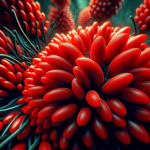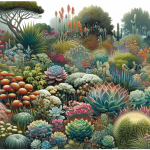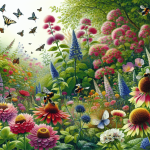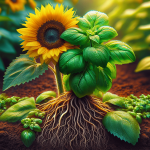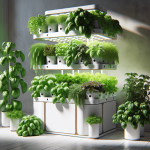This post may contain affiliate links. As an Amazon Associate, we may earn commissions from qualifying purchases.
Taking care of your plants can be both rewarding and challenging, and one crucial question that often arises is, “How often should I water my plants?” Finding the right balance between overhydration and underwatering can sometimes feel like a guessing game, but fear not – this article will provide you with simple tips and guidelines to ensure your plants receive the proper hydration they need to thrive. So whether you’re a seasoned plant parent or just starting your green thumb journey, let’s uncover the secrets to keeping your plants happy and hydrated.
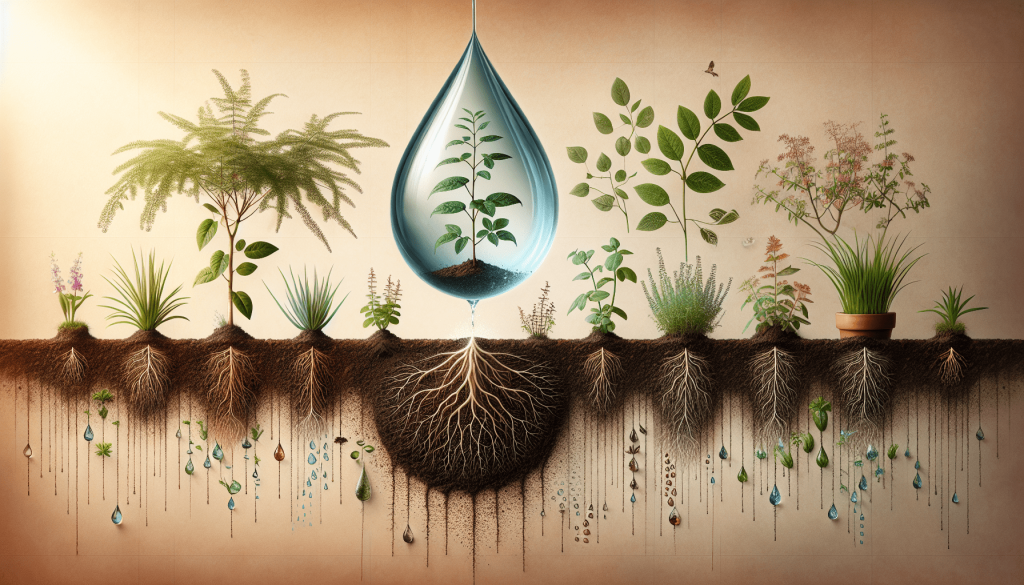
Factors to Consider
When it comes to watering your plants, there are several factors that you need to consider. These factors will help determine how often and how much water your plants require. The type of plant, size of the plant, type of soil, and environmental conditions all play a role in determining the watering needs of your plants. By understanding these factors, you can ensure that your plants are getting the proper amount of water they need to thrive.
Type of Plant
Different plants have different water requirements. Some plants, like succulents, thrive in dry conditions and do not require frequent watering. On the other hand, plants like ferns or tropical plants prefer to be consistently moist and require more frequent watering. It’s important to research the specific needs of each plant in your garden to ensure that you are providing them with the right amount of water.
Size of Plant
The size of the plant also affects its watering needs. Smaller plants, such as seedlings or young plants, generally require less water compared to larger, more mature plants. This is because smaller plants have smaller root systems and are not able to absorb as much water. As your plants grow and develop, their water requirements will increase. It’s important to adjust your watering schedule accordingly to accommodate the increasing needs of your plants as they grow.
Type of Soil
The type of soil in which your plants are planted plays a crucial role in determining their watering needs. Different types of soil have different water-retention capabilities. For example, sandy soil tends to drain water quickly, while clay soil retains water for longer periods. It’s important to understand the composition of your soil and how it retains water. This will help you determine the frequency and amount of water your plants require.
Environmental Conditions
Environmental conditions, such as temperature, humidity, and sunlight, also impact the watering needs of your plants. During hot and dry weather, plants tend to lose more water through evaporation and transpiration, which means they will require more frequent watering. Similarly, plants in humid conditions may require less watering as the moisture in the air helps keep their leaves hydrated. It’s important to observe the environmental conditions in your area and adjust your watering schedule accordingly.
Signs of Underwatering
Underwatering can be detrimental to the health of your plants. It occurs when plants do not receive enough water to meet their needs. By knowing the signs of underwatering, you can take prompt action to address the issue and prevent further damage to your plants.
Wilting
One of the most obvious signs of underwatering is wilting. When plants do not receive enough water, they are unable to maintain turgidity, causing their leaves and stems to wilt and droop. Wilting is the plant’s mechanism to conserve water and reduce the surface area through which water is lost. If you notice wilting in your plants, it’s a clear indication that they need water.
Dry Soil
Underwatered plants often have dry soil. You can check the moisture level of the soil by inserting your finger about an inch deep into the soil. If the soil feels dry to the touch, it means that the plants need watering. Dry soil is unable to provide the necessary hydration to the plants, leading to water stress and eventually affecting their overall health.
Yellowing Leaves
When plants are underwatered, their leaves may start to turn yellow. This discoloration is a result of the plant’s inability to absorb enough water to carry out essential functions like photosynthesis. Yellowing leaves can be a sign of severe dehydration and should not be ignored. If you notice yellowing, it’s crucial to provide your plants with sufficient water to prevent further damage.
Slow Growth
Underwatered plants often show signs of slow or stunted growth. This is because water is essential for facilitating various metabolic processes within the plant, including nutrient absorption and cell expansion. When plants are deprived of water, their growth is significantly hindered. Keep an eye on the growth rate of your plants and take action if you notice that they are not growing as they should.
Signs of Overwatering
While underwatering is a common problem, overwatering can be just as harmful to your plants. Overwatering occurs when plants receive more water than they require, leading to waterlogged roots and other issues. By recognizing the signs of overwatering, you can prevent damage to your plants and ensure their health.
Yellowing Leaves
Similar to underwatering, overwatered plants may also exhibit yellowing leaves. This can be confusing as the symptoms are similar, but the underlying cause is different. Overwatering leads to a lack of oxygen in the root zone, hindering the plant’s ability to take up nutrients. This nutrient deficiency causes the leaves to turn yellow. If your plants have yellowing leaves and you have ruled out underwatering, overwatering may be the cause.
Root Rot
Overwatering creates excessively damp conditions in the soil, which can lead to root rot. Root rot is a fungal disease that affects the roots of plants, causing them to become weak and mushy. Infected roots are unable to absorb water and nutrients effectively, resulting in further deterioration of the plant’s health. If you notice a foul smell or dark, mushy roots when you pull up a plant from the soil, it’s a clear indication that overwatering has led to root rot.
Mold or Fungus
Excessive moisture promotes the growth of mold and fungus in the soil. These pathogens can attack the plant’s roots and foliage, causing various diseases. If you notice any mold or fungus growing on the surface of the soil or on the leaves of your plants, it’s likely a result of overwatering. It’s important to address this issue promptly to prevent further spread and damage to your plants.
Foul Odor
A foul, musty smell emanating from the soil is another sign of overwatering. The stagnant water and lack of oxygen in the root zone create conditions favorable for the growth of anaerobic bacteria. These bacteria produce hydrogen sulfide, which is responsible for the unpleasant odor. If you notice a foul odor, it’s a clear indication that your plants are being overwatered.
Frequency for Indoor Plants
Watering indoor plants can be a bit tricky, as the conditions indoors can vary significantly from the natural environment. However, there are a few guidelines you can follow to ensure that your indoor plants receive the right amount of water.
Varies by Plant
Each indoor plant has its own specific watering requirements, which can vary based on factors such as the type of plant, size of the plant, and environmental conditions within your home. Some plants, like succulents and cacti, prefer dry conditions and require less frequent watering, while others, like ferns and tropical plants, thrive in consistently moist soil and require more watering. It’s important to research the specific needs of each plant to determine the appropriate watering frequency.
Check Soil Moisture
One way to determine when your indoor plants need watering is by checking the moisture level of the soil. Insert your finger about an inch deep into the soil and feel for moisture. If the soil feels dry, it’s an indication that your plants need watering. However, if the soil feels moist, you can hold off on watering for a bit longer. This simple test can help you gauge the watering needs of your indoor plants.
Water Thoroughly
When watering indoor plants, it’s important to water thoroughly. This means ensuring that the water reaches the root zone of the plant and that excess water drains out of the pot. Thorough watering helps prevent the buildup of salts or toxins in the soil and encourages healthy root growth. Be sure to pour water slowly at the base of the plant until you see it coming out of the drainage holes. This ensures that the entire root zone receives moisture.
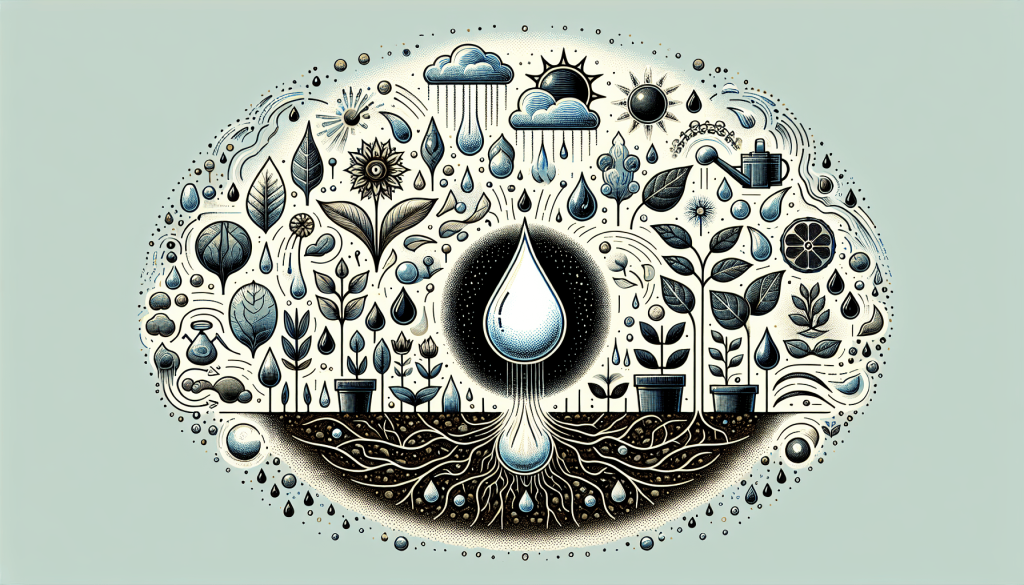
Frequency for Outdoor Plants
Outdoor plants have the advantage of natural rainfall, but they still require supplemental watering, especially during dry periods. The frequency of watering outdoor plants depends on various factors, including the type of plant, climate, and environmental conditions.
Varies by Plant
Just like indoor plants, outdoor plants have specific watering requirements that vary based on the type of plant. Different plants have different water needs, and it’s important to consider these needs when determining the watering frequency. Some plants, such as desert plants, are drought-tolerant and require less frequent watering, while others, like annual flowers, may require more frequent watering. Research the specific watering needs of each outdoor plant in your garden to ensure they thrive.
Consider Climate
The climate in which your outdoor plants are located plays a significant role in determining their watering needs. In hot and dry climates, plants tend to lose water more rapidly through evaporation and transpiration. This means that you may need to water more frequently to compensate for the increased water loss. On the other hand, if you live in a humid climate, your plants may require less frequent watering. Take into account the climate in your area when establishing a watering routine for your outdoor plants.
Water Deeply and Less Frequently
When watering outdoor plants, it’s important to water deeply and less frequently. This encourages the development of deep root systems, which in turn helps plants access water more efficiently. Shallow, frequent watering can lead to shallow root growth, making plants more vulnerable to drought stress. To water deeply, apply water slowly at the base of the plant, allowing it to soak into the soil. This will ensure that the water reaches the deeper root zones, where it is most beneficial.
Watering Methods
There are several methods you can use to water your plants, and choosing the right one depends on factors such as the type of plant, size of the area to be watered, and personal preference. Here are some common watering methods:
Watering Can
Using a watering can is a traditional and simple method of watering plants. It gives you more control over the amount of water being applied and allows you to target specific plants or areas. Watering cans are especially beneficial for indoor plants or small garden beds where precision is necessary.
Sprinklers
Sprinklers are an efficient way to water larger areas or lawns. They distribute water evenly over a wide coverage area, ensuring that all plants receive adequate hydration. Sprinklers are ideal for outdoor plants or areas with extensive plantings. However, it’s important to use sprinklers during the cooler parts of the day to minimize water loss due to evaporation.
Drip Irrigation
Drip irrigation is a method that delivers water directly to the plant’s root zone, minimizing water loss through evaporation and surface runoff. It consists of a network of tubes that are placed near or under the soil surface, with small emitters delivering water slowly and consistently. Drip irrigation is highly efficient and can be used for both indoor and outdoor plants, especially in areas where water conservation is a priority.
Self-Watering Systems
Self-watering systems are a convenient way to ensure that your plants receive a consistent water supply. These systems typically consist of a reservoir or water storage container connected to the plant’s pot or growing medium through a wick or capillary action. The plant can draw water from the reservoir as needed, reducing the risk of overwatering or underwatering. Self-watering systems are particularly useful for indoor plants or when you need to leave your plants unattended for an extended period.
Best Time to Water
The timing of watering plays a crucial role in the absorption and utilization of water by plants. While the watering needs of plants should always be the primary consideration, there are certain times of the day that are generally optimal for watering.
Early Morning
Watering in the early morning is often considered the best time to ensure that plants have access to water when they need it most. By watering early in the day, the water has a chance to penetrate the soil and reach the plant’s roots before the heat of the day causes excessive evaporation. Additionally, watering in the morning allows the foliage to dry out during the day, reducing the risk of fungal and bacterial diseases.
Late Afternoon
Another suitable time for watering outdoor plants is in the late afternoon, just before the temperatures start to cool down. Watering at this time allows the plants to absorb the water they need while also taking advantage of the natural cooling of the evening. However, it’s important to avoid watering too late in the day or at night, as this can create prolonged moisture on the foliage, increasing the risk of diseases.
Avoid Watering at Night
Watering at night is generally discouraged because it can create conditions that favor the growth of fungal and bacterial diseases. The prolonged moisture on the foliage during the night provides an ideal environment for pathogens to thrive. Additionally, water that sits on the foliage overnight can cause damage, as it can magnify the sun’s rays and potentially burn the leaves. It’s best to avoid watering at night whenever possible.
Watering Techniques
Proper watering techniques can make a significant difference in the health and vitality of your plants. By following these techniques, you can ensure that your plants receive water where they need it most and reduce the risk of overwatering or underwatering.
Bottom-Up Watering
Bottom-up watering, also known as sub-irrigation, is a technique that involves watering the plants from the bottom. This method allows the plants to absorb water through their root system, ensuring that the water reaches the entire root zone. To use this technique, place the plant pot in a tray or saucer filled with water. The plant will draw up water through the drainage holes at the bottom of the pot. Bottom-up watering is especially useful for plants with sensitive foliage that are prone to fungal diseases.
Avoid Wetting Foliage
When watering your plants, it’s important to avoid wetting the foliage as much as possible. Wet foliage can create a favorable environment for the growth of fungal and bacterial diseases. Additionally, some plants, particularly those with hairy or fuzzy leaves, are more susceptible to damage when wet. To avoid wetting the foliage, aim to water at the base of the plant, directly onto the soil or growing medium.
Water at Root Zone
Watering at the root zone ensures that the water directly reaches the area where the plant needs it most. The root zone is where the majority of the roots are located and where water absorption takes place. To water at the root zone, aim to apply water directly at the base of the plant, where the roots are concentrated. This allows the plant to efficiently take up the water it needs, leading to healthier and more robust growth.
Water Conservation
Water conservation is important not only for the environment but also for the sustainability of your garden. By implementing water conservation practices, you can reduce water waste and maintain healthy plants.
Collect and Reuse Water
Collecting and reusing water is an effective way to conserve water in your garden. You can collect rainwater in a dedicated rain barrel or container and use it to water your plants. Another method is to reuse the water from activities such as washing vegetables or boiling eggs. Instead of letting the water go down the drain, collect it and use it for watering your plants. By reusing water, you can reduce your water consumption and ensure that every drop is put to good use.
Mulching
Mulching is a technique that involves placing a layer of organic or inorganic material on the soil surface around your plants. Mulch acts as a protective cover, helping to retain moisture in the soil and prevent evaporation. By mulching your garden beds, you can reduce water loss from the soil, meaning you’ll need to water less frequently. Organic mulches, such as compost or wood chips, also enrich the soil as they break down, providing additional benefits to your plants.
Group Plants with Similar Watering Needs
Another water-saving practice is grouping plants with similar watering needs together. This allows you to water them more efficiently and avoid wasting water on plants that require less frequent watering. By grouping plants based on their water requirements, you can tailor your watering schedule to address the specific needs of each group. This not only saves water but also ensures that each plant receives the proper amount of hydration to thrive.
Adjusting Watering Schedule
While having a consistent watering schedule is important, there are times when adjustments need to be made to accommodate seasonal changes, plant growth stages, and overall plant health.
Seasonal Changes
Seasonal changes can significantly impact your plants’ watering needs. During the summer months, when temperatures are high and rainfall is scarce, your plants may require more frequent watering. In contrast, during the cooler months or rainy seasons, your plants may need less frequent watering due to reduced evaporation rates and increased natural rainfall. Be mindful of these seasonal changes and adjust your watering schedule accordingly to ensure that your plants receive the right amount of water.
Plant Growth Stages
As your plants grow and develop, their watering needs can change. Young seedlings and newly established plants typically have smaller root systems and require more frequent watering to support their growth. As the plants mature and develop larger root systems, their water requirements may decrease. Pay attention to how your plants are growing and adjust your watering schedule as needed to meet their changing needs.
Monitoring Plant Health
Regularly monitoring the health of your plants is crucial for ensuring they receive the right amount of water. Pay attention to any signs of underwatering or overwatering, such as wilting, yellowing leaves, or slow growth. These signs can indicate that your plants are not receiving the proper amount of water. Adjust your watering schedule accordingly, and make any necessary changes to prevent further damage and promote healthy plant growth.
In conclusion, watering your plants properly is essential for their health and vitality. By considering factors such as the type of plant, size of the plant, type of soil, and environmental conditions, you can determine the watering needs of your plants. Recognizing the signs of underwatering and overwatering, understanding the frequency of watering for indoor and outdoor plants, utilizing the appropriate watering methods, timing your watering for optimal results, implementing proper watering techniques, conserving water, and adjusting your watering schedule when necessary will all contribute to the overall success of your plants. Happy watering!

